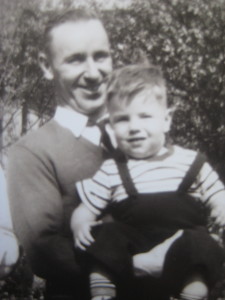I was born in June, 1945, a few months after Harry Truman became president and just before the dropping of the atomic bomb on Hiroshima. Yep, I came into this world at the tail end of World War Two and the dawn of the Nuclear Age. A house cost $10,000; a good car, $1,200 and gas was 16 cents a gallon. Annual income was a whopping $2,500.
Getting old encompasses the knowledge that the things you remember are obsolete, demolished or in a museum. Memories of childhood appear on historical documentaries and the comic books and toys you bought for a dime are now worth hundreds of dollars at auction. And, young ladies call you sir.
Candy bars were a nickel, soda pop was a dime and a quarter a week allowance purchased penny candies at the variety store – always located near the school. You could purchase two malted milk balls, a licorice whip, little colored sugar dots on paper or two Mary Janes (peanut butter candy; not whacky tobacky) for only a penny.
Television was black and white and, before my family purchased one in 1950, I remember my dad taking me down the street to the appliance store where he would watch wrestling, along with other neighbors, on the TV displayed in the window. Some folks even brought chairs! Keep in mind there were only about 7000 sets in the U.S. In 1945 and, by 1950, were becoming an entertainment necessity.
When we got our own TV in the early 1950’s, I watched Ding-Dong School with Miss Francis who taught me how to finger paint. I still remember the old test pattern that had a Native American at the center with a Maltese style cross extending to the end of the screen. This pattern preceded the daily broadcast which usually began around 4pm with Howdy Doody. At night, we would gather and watch Mr Peepers, Our Miss Brooks, I Love Lucy and Jackie Gleason over a big heavily salted and buttered bowl of popcorn, made on the stove, not in a microwave (which would not be invented for decades).
There were individual stores along Diversey Parkway: grocery, meat, bakery, fish, a tavern and Zappa’s variety store on the corner (more on these later). When you purchased items at the grocery store, they were pulled along the counter by a manually operated wooden rack rather than conveyor belt. There were no bar codes and the Drug Store had a soda fountain.
Weapons in school meant pea-shooters, rubber bands and paper clips, and discipline at home was more severe than a trip to the principal’s office. I went to a Catholic school and the nuns could whack you with a ruler or their bare hands if you got out of line. Students wore uniforms and “under God” was not yet added to the Pledge of Allegiance.
Milk was delivered to your home in glass bottles, which, when emptied, mom washed out and placed on the back porch. Knives were sharpened by a guy who walked down the alley with a pushcart ringing a bell; there was the Rag Man, who would shout out, “rags-old iron” as an aged horse pulled the wagon over the cindered alleyway. Alleys were not paved until much later. There were door-to-door vendors such as the Fuller Brush Man, The Watkins extract salesmen, Electrolux vacuum cleaners, the neighborhood Avon lady, Encyclopedia Britannica, and doctors made house calls.
My mom would wash clothes in a wringer washer located in the basement, the kind that had the two wooden rollers attached to the top rear of the machine. After washing you would pull the clothes through the wringers to get rid of the excess water, then she would hang everything outside along the rear porch of the apartment building for the entire neighborhood to view my underwear, unfurling in the breeze like small white flags.
Speaking of flags, every Fourth of July my dad would buy fireworks – skyrockets, spinners and major explosive devices from the vendor who set up shop in the vacant lot near our building. We all gathered there later in the evening as he would set off the remainder of his display for the neighborhood kids.
Being 70 years old, there are a lot of memories and some of the more precious are those of childhood when things were a bit different. But not that different for there were still fears and crime and injustice and things that plague us today. The biggest difference is that we had no instantaneous communication, no internet, no cell phones. Basically, we were kinda uninformed. We didnt know all that was going on except what was read in the newspapers, heard on the radio or, later, seen on TV.
Growing up in the 1950’s, for me, was a time of blissful ignorance and occasional discoveries and incidents which would eventually play a role in my becoming an adult. I never had the opportunity to share many of these stories with my son. I hope to now share them with you. Peace.
